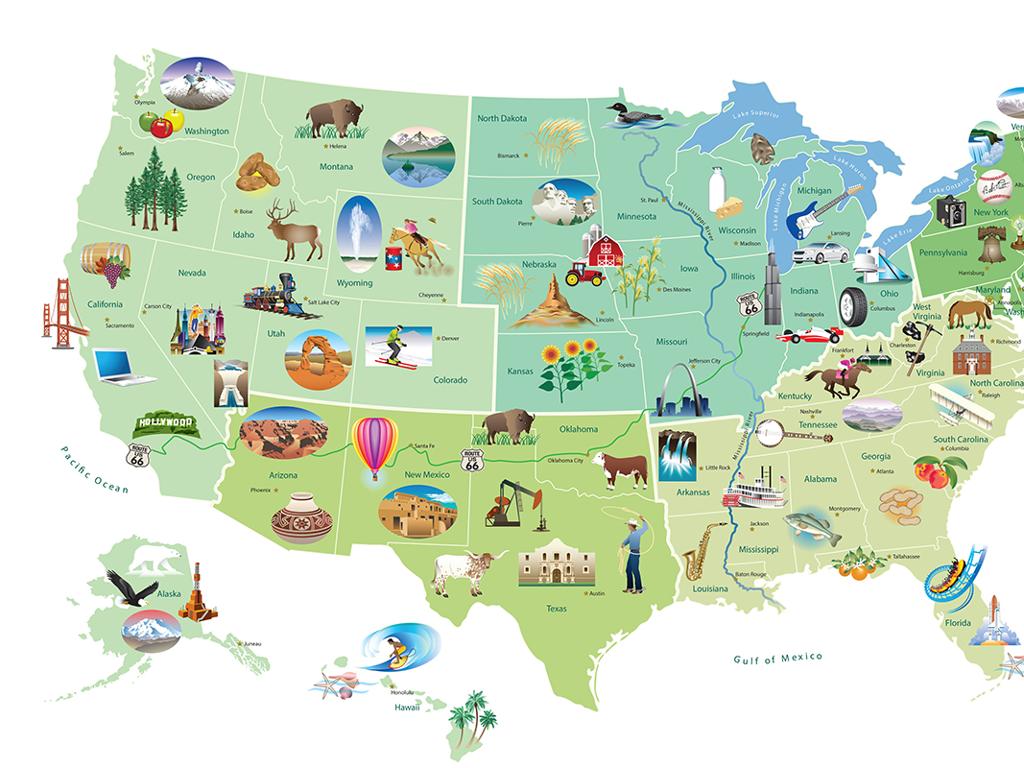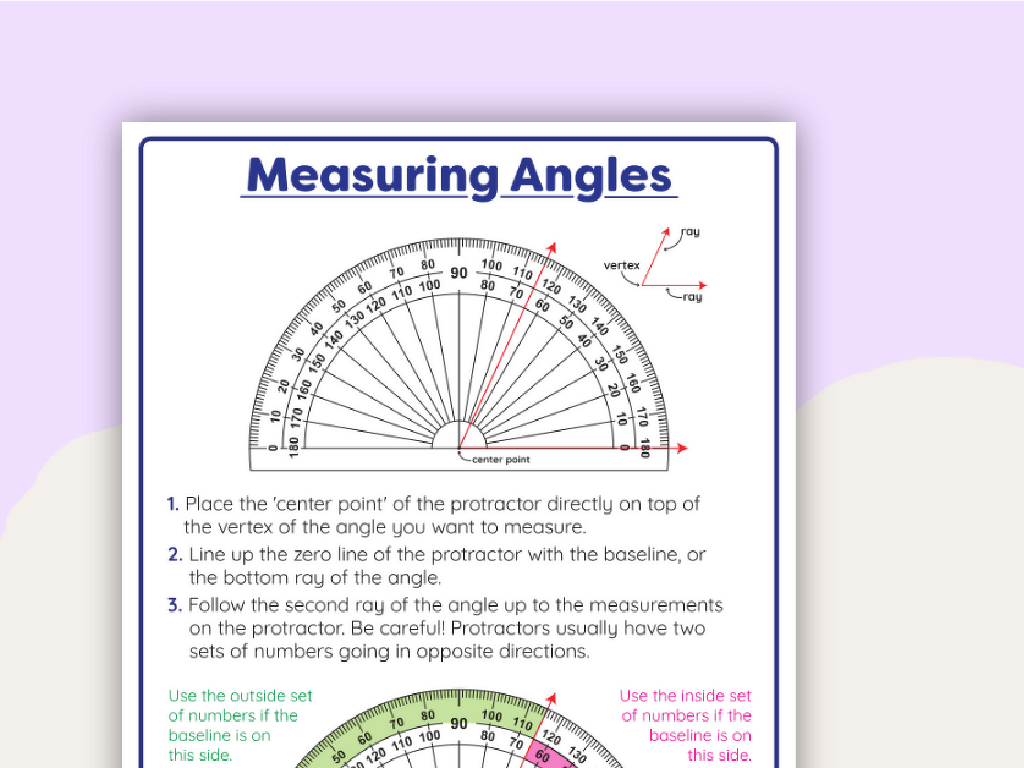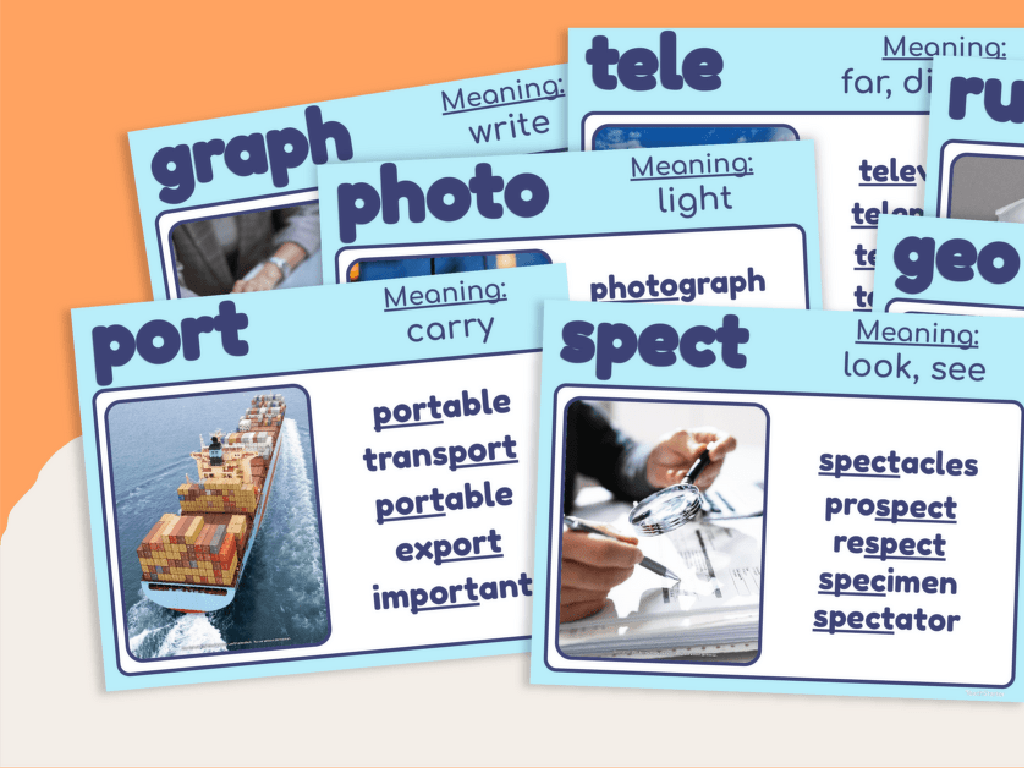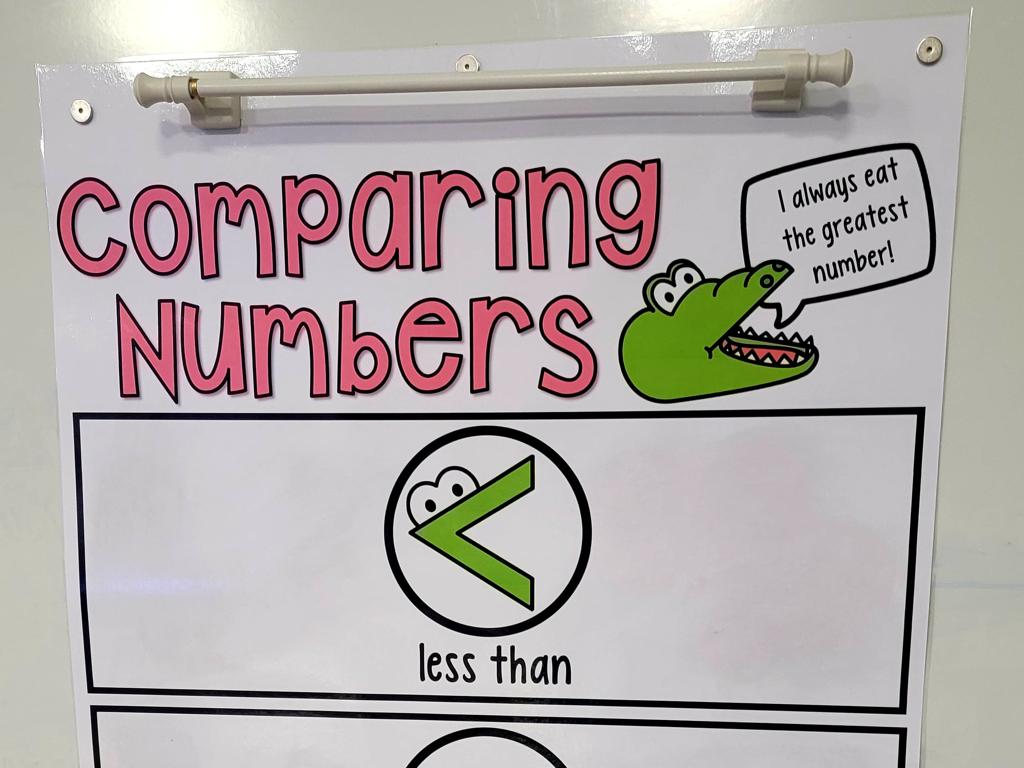Select Parts Of A Topographic Map
Subject: Science
Grade: Fifth grade
Topic: Earth'S Features
Please LOG IN to download the presentation. Access is available to registered users only.
View More Content
Welcome to Topographic Maps!
– Earth’s surface in map form
– Defining topographic maps
– A map showing terrain relief with contour lines
– Uses of topographic maps
– Helps hikers, builders, and scientists
– Importance in various fields
– Essential for planning, navigation, and land management
|
This slide introduces students to the concept of topographic maps, which represent the Earth’s surface in detailed map form. Begin by explaining that these maps are a way to visualize the shape and features of land surfaces. Define a topographic map as one that shows the shape of the terrain using contour lines, which indicate elevation. Discuss how these maps are used by different people, such as hikers to plan routes, builders to assess land for construction, and scientists to study environmental changes. Emphasize the importance of topographic maps in various fields, including urban planning, resource management, and outdoor activities. Encourage students to think about how different landscapes might look on a topographic map and why such a representation could be useful.
Topographic Map Symbols and Colors
– Learn map symbols
– Symbols represent structures, like buildings and bridges.
– Discover color meanings
– Blue for water, green for vegetation, brown for contour lines.
– Symbols show land features
– E.g., a triangle might represent a mountain peak.
– Colors differentiate terrain
– Green areas are lower land, darker greens indicate thicker vegetation.
|
This slide introduces students to the key symbols and colors found on topographic maps, which are essential tools for understanding Earth’s features. Symbols on these maps can represent various structures and landmarks, while colors are used to differentiate between types of terrain and features such as water bodies, vegetation, and elevation. It’s important to explain that contour lines in brown show changes in land elevation. Encourage students to think about why certain colors might be used to represent different features (e.g., blue for water because water is often depicted as blue in art and media). Have students bring in examples of topographic maps or provide them with copies to explore the symbols and colors in a hands-on manner.
Understanding Contour Lines on Topographic Maps
– What are contour lines?
– Lines on a map that show points of equal elevation
– Reading contour lines
– Close lines mean steep slope; spaced lines mean flat area
– Contour lines indicate elevation
– The height above sea level at different points
– Contour lines reveal terrain shape
– The outline of hills, valleys, and plains
|
Contour lines are essential for understanding the layout of the land on a topographic map. They connect points that are at the same elevation above sea level, which helps us visualize the height and depth of the terrain. When contour lines are close together, it indicates a steep slope, while lines that are far apart suggest a flatter area. By studying these lines, we can determine the shape of the land, whether it’s a hill, valley, or plain. Encourage students to look at various topographic maps and practice identifying these features. Discuss how hikers, engineers, and scientists use this information in real-world applications.
Elevation and Scale on Topographic Maps
– Elevation: Highs and Lows
– Elevation shows how high or low an area is.
– Map Scale: A Measuring Tool
– Scale helps us understand real distances.
– Measuring Distance: Map vs. Reality
– Use the scale to measure between two points.
– Practice: Reading Map Elevations
|
This slide introduces students to the concepts of elevation and scale on topographic maps. Elevation refers to the height of the land, which is represented by contour lines on a topographic map. The closer the lines, the steeper the terrain. Map scale is crucial for understanding the relationship between the map’s measurements and actual ground distances. Teach students how to use the scale to measure the distance between two points on the map. Provide examples and practice exercises for students to apply these concepts, such as estimating the elevation change between two points or the distance between landmarks. Encourage students to ask questions and explore maps of familiar areas to connect the lesson to the real world.
Identifying Landforms on Topographic Maps
– Recognize hills, valleys, plateaus
– Hills are shown as concentric circles, valleys are between hills, plateaus are flat elevated areas.
– Use contour lines for peaks and depressions
– Contour lines close together indicate steep terrain, while lines far apart show flat areas.
– Real-life topographic map examples
– Examples: A local park’s map showing trails and elevation changes.
|
This slide aims to help students identify various landforms such as hills, valleys, and plateaus on topographic maps. Emphasize the importance of contour lines, which are used to represent three-dimensional landforms on two-dimensional maps. Explain how the spacing of contour lines helps us understand the landscape’s slope and elevation. Use real-life examples, such as a topographic map of a local park, to illustrate how these features are depicted. Encourage students to bring in topographic maps of areas they are familiar with to discuss in class.
Water Features on Topographic Maps
– Identifying bodies of water
– Look for blue areas; shapes may indicate lakes, rivers, or oceans.
– Significance of water in topography
– Water shapes land and indicates elevation changes.
– Reading river flow direction
– Lines on rivers show flow direction; the thicker end points downstream.
– Practice with map examples
|
This slide introduces students to the importance of water features on topographic maps. Teach students how to recognize different bodies of water by their shapes and colors, typically blue. Explain how water features can help determine the landscape’s elevation and shape. Show how to read the flow direction of rivers on a map, which is crucial for understanding the geography of an area. Provide examples of topographic maps for students to practice identifying these features and understanding their significance in the map’s overall topography. Encourage students to ask questions and discuss how water features might affect other aspects of the environment.
Human-Made Features on Topographic Maps
– Spotting roads and buildings
– Look for lines and shapes that represent roads, homes, and schools.
– Human activities on maps
– Symbols show where we live, work, and play.
– Human impact on landscapes
– How do buildings and roads change the land? Think about hills and valleys.
|
This slide aims to teach students how to identify human-made features such as roads and buildings on topographic maps. Emphasize the use of different symbols and colors to represent various structures and activities. Discuss how these features can affect natural landscapes, such as altering water flow or changing wildlife habitats. Encourage students to think critically about the relationship between human development and the environment. Provide examples of local maps to illustrate these concepts, and consider a class activity where students can create their own simple topographic map including human-made features.
Class Activity: Crafting Topographic Maps
– Model a landform with clay or play-dough
– Draw elevation changes with contour lines
– Contour lines are close on steep terrain, spread out on flat areas
– Label water features on your map
– Add human-made structures
|
This hands-on activity is designed to help students understand the three-dimensional aspects of topographic maps by creating their own. Provide students with clay or play-dough to construct a landform, such as a mountain or valley. Once the model is complete, have them draw contour lines to represent elevation changes, teaching them that closer lines indicate steeper slopes. Next, students should label any water features like lakes or rivers. Finally, they can add human-made structures such as bridges or buildings. This activity will reinforce their understanding of how topographic maps represent real-world features and elevations. Possible variations include creating maps of local landmarks or imaginary landscapes. Encourage creativity and discussion about how the map relates to actual landforms.
Topographic Maps: Conclusion and Review
– Recap map features
– Contour lines, symbols, and scale
– Importance for scientists
– Helps predict geological events
– Explorers benefit too
– Assists in planning expeditions
– Next class: Map reading
|
As we wrap up today’s lesson, let’s review the key features of topographic maps, including contour lines that show elevation, various symbols that represent different landforms, and the scale that helps us measure distances. These maps are crucial tools for scientists in predicting geological events like earthquakes and volcanic eruptions. Explorers also rely on these maps to navigate and plan their expeditions effectively. For the next class, students should come prepared to apply their knowledge by reading and interpreting topographic maps. This will help solidify their understanding and give them practical skills in geography and earth science.





